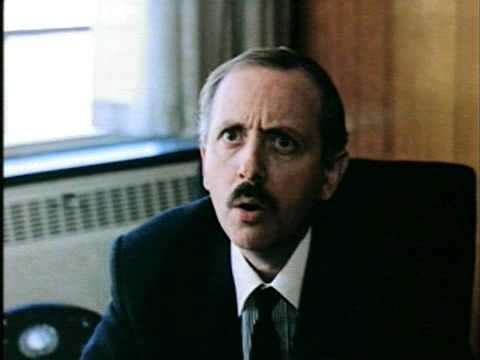Music gives you somebody to be in The Who's Quadrophenia

Watch This offers movie recommendations inspired by new releases or premieres, or occasionally our own inscrutable whims. This week: The recent (and very strange) Jeannette: The Childhood Of Joan Of Arc has us tapping our toes to other rock musicals, rock operas, and rock-driven movies.
Quadrophenia (1979)
There are no traditionally operatic moments, rock or otherwise, in Quadrophenia—no scenes where characters stop to belt out exposition or their feelings, and certainly nothing approaching the bombast of The Who’s first rock opera, Tommy. Franc Roddam’s 1979 film adaptation weaves in songs from the band’s 1973 album at crucial moments, and the plot faithfully transcribes a storyline that, in song form, was so confusing that Roger Daltrey and Pete Townshend legendarily bored concert audiences trying to explain it. But as much energy and dramatic heft as tunes like “The Real Me,” “5:15,” and “Love, Reign O’er Me” lend it, Quadrophenia the movie would work just as well as a period piece or kitchen-sink drama if it had no music at all.
Still, the music is key to Quadrophenia—not just as a storytelling device, and not just in the way it gives voice to its protagonist’s angsty inner monologues, but as the nexus around which all of its characters’ lives revolve. Both film and album are about very specific subcultures existing in a narrow timeframe: the tailored suit-worshipping, scooter-riding, amphetamine-addled Mods who clashed with the black leather-wearing, motorcycle-riding Rockers in early-’60s England. But their worlds are wholly defined by the music they listen to: for the Mods, American R&B and the British bands (like The Who) who copied it; for the Rockers, Gene Vincent, Eddie Cochran, and other greaser guitar gods. Everything else about their identities spirals out from there. Though the music itself may now be dated—it was even when the film was released—the tribalism surrounding it, and the conflict that creates, makes the story timeless. Certainly, there are no yearly seashore rumbles between emo-punks and Soundcloud rap fans (at least that I’m aware of). But anyone who’s ever defined themselves by what music they like can relate.
“Identity” is the key theme of Quadrophenia; it’s all Phil Daniels’ Jimmy is looking for. He doesn’t get it from his day job slinging mail, while at home he still lives with his parents in a state of arrested adolescence, magazine pin-ups and show flyers papering his bedroom walls. As Daltrey growls over the opening shots of Daniels joyously riding his Lambretta through the nighttime streets, “The Real Me” of Jimmy is this Mod persona he adopts—“You gotta be somebody, ain’t ya?” he asks—even as the song’s lyrics hint at the roiling self-doubt tamped down beneath his pinstripe suits and parkas.
Like the rest of the Mods and also the Rockers, Jimmy rebels by putting on a uniform and adhering to the rules and customs of his people: Sitting in the bathtub with his new Levis until they properly shrink. Popping pills and doing choreographed dances to “Green Onions.” Respecting the Mod hierarchy that honors the “face,” those flashy peacocks in well-cut custom suits, as the scene alphas, captained by Sting as the sharkskin-clad, human cheekbone Ace Face. And most importantly—and destructively—Jimmy longs to prove his loyalty by going to war with the Rockers, traveling with his mates to throw down in one of their annual Bank Holiday scuffles along the Brighton beach.
Roddam’s film captured all of these details with such documentarian specificity, it was enough to feed a Mod revival—not just in 1979, when mod-punk bands like The Jam were also stirring renewed interest in skinny ties and vintage soul sounds, but again 20 years later, around the time The Who took Quadrophenia out on another (more successful) tour and the film got a special-edition DVD release. In the interim between ’90s indie rock and early 2000s post-punk, many of us Jimmies of that generation of American scenesters briefly went Mod. We championed rigidly revivalist garage bands like The Mooney Suzuki, and went to “soul” parties where we danced to Nuggets singles while old episodes of Shindig! were projected on the walls. And most obviously, we took our style cues from Quadrophenia. There, as in the film, the music had created a tribe, and Quadrophenia gave us decades-later descendants a visual guide to its costumes and customs—allowing us to, like Jimmy, learn how to not be like everybody else by doing whatever it takes to fit in.
Of course, Jimmy eventually discovers the flaws in that plan—the inherent limits of confining yourself to the strictures of a record collection or a tightly tailored suit, and the folly of looking for lasting connections in people who just happen to dress like you—just like we did, even if it took passing through a 1980s/post-punk revivalist phase before we all stopped cosplaying. (I will also be forever grateful to the then-girlfriend, who talked me out of getting a “Mod target” tattooed on my arm.) In the film, Jimmy’s search for identity in Mod culture and camaraderie, and the betrayal he feels when its superficialities and disloyalties are exposed, culminates in an ending that’s symbolically cathartic, if appropriately indefinite. (Plans for a sequel were, rightfully, widely condemned.)
It’s to Pete Townshend’s credit that Quadrophenia doesn’t just cast a nostalgic or even wry look back at The Who’s old scene haunts (he’s not Don Henley), but actually critically engages with their emptiness and posturing, giving all that superficiality a tragic depth. Quadrophenia is operatic in its emotions, if not in scale or song. And like the best music, it lets you see yourself in it, even if it’s just a surface reflection.
Availability: Quadrophenia is available to stream on Amazon and iTunes. It’s also available for purchase on DVD and Blu-ray from Criterion, and you may be able to find it at your local video store or library.